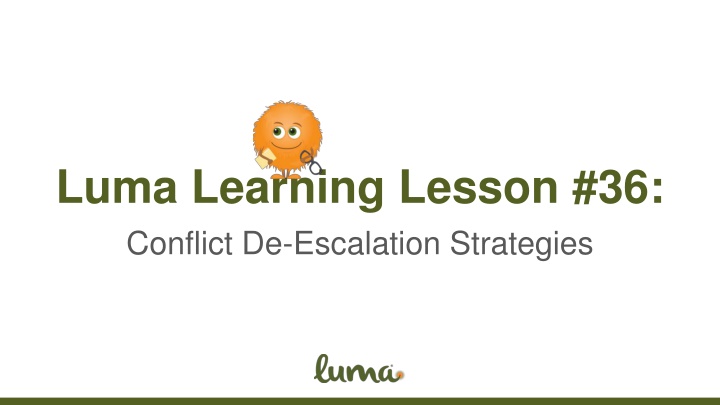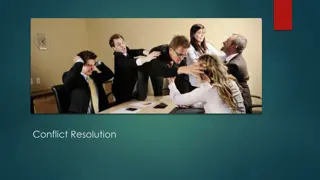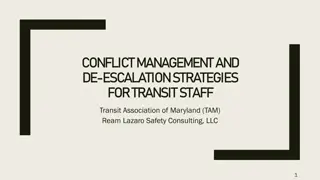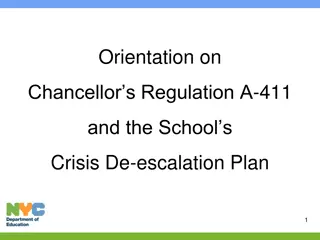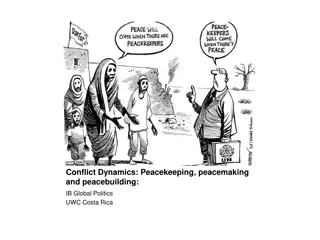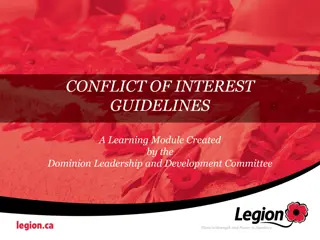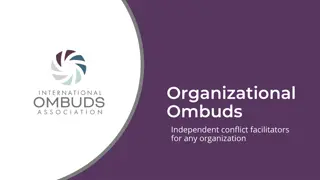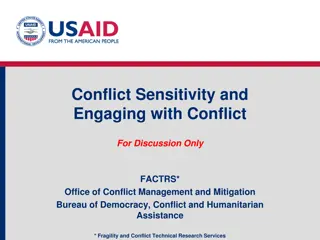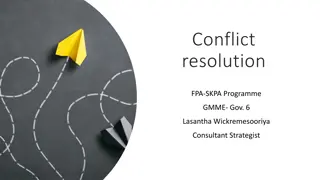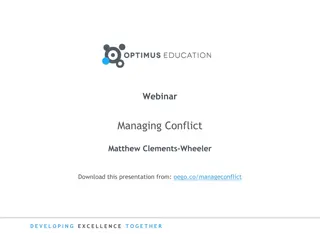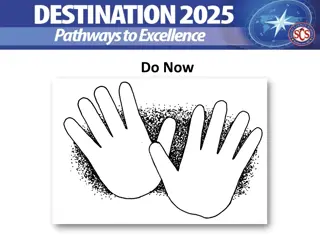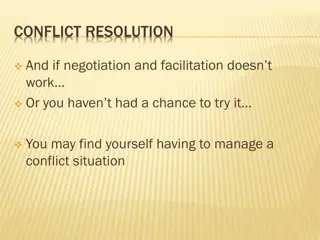Conflict De-Escalation: Strategies for Handling Workplace Conflicts
Learn effective conflict de-escalation strategies for handling workplace conflicts. Strategies include removal/walk away, calming yourself, checking voice and body language, being aware of surroundings, expressing empathy and understanding, and reflecting and regrouping for future resolution.
Download Presentation

Please find below an Image/Link to download the presentation.
The content on the website is provided AS IS for your information and personal use only. It may not be sold, licensed, or shared on other websites without obtaining consent from the author.If you encounter any issues during the download, it is possible that the publisher has removed the file from their server.
You are allowed to download the files provided on this website for personal or commercial use, subject to the condition that they are used lawfully. All files are the property of their respective owners.
The content on the website is provided AS IS for your information and personal use only. It may not be sold, licensed, or shared on other websites without obtaining consent from the author.
E N D
Presentation Transcript
Luma Learning Lesson #36: Conflict De-Escalation Strategies
Removal/Walk Away If any situation scares you or you feel unsafe. Leave and call for help. One quick way to stop conflict is to remove yourself from the situation. If you are observing other coworkers in the middle of an escalated situation, encourage them to take a break from the project; stepping away from the table allows them to reset and think about the situation away from other coworkers.
Calm Yourself, Take a Breath, and Listen It is natural if you are in the middle of an escalated situation, to continue to raise your voice or talk over the other person. First, calm down before interacting. To do this, take a deep breath. Always encourage employees or coworkers to become calm if ever in an escalated situation. As difficult as it may be, try to listen and take all the information in. Just by pausing, listening, and stopping the conversation may help de-escalate the situation. A situation can not escalate if you do not engage in it. Remain calm and patient when interacting with a coworker that may be upset. We know this is easier said than done. You can be the bigger person!
Check Your Voice and Body Language Use a low, dull tone of voice and do not get defensive...even if it is directed at you and you feel attacked! Also check your own body language, place your hands in front in an open and relaxed position. Definitely don t roll your eyes, shrug your shoulders or point your fingers at a person. Keep a safe distance from the person. Do not get in their personal space.
Beware of the Surroundings Always be aware of your surroundings. Are there objects that could be thrown? Check to see where the nearest exit is so you can leave and you don t feel trapped.
Expressing Empathy and Understanding Showing empathy even when you feel you are right may be difficult, but if you express an understanding of why a person feels a particular way will go a long way with conflict. It is ok to agree to disagree. You can paraphrase what they saying so they know that you understand where they are coming from. You may ask questions and take notes to help get clarification and form resolution ideas. You can ask for ideas and solutions. Get the person s input. Research shows it is hard for someone to stay angry at you if they agree with you.
Reflect and Regroup Think over what you heard. You can deflect the situation about the future. Are there underlying issues that can be resolved for the future? Is this situation the proverbial final straw ? Regroup at a later day and make plans to move forward with the project.
